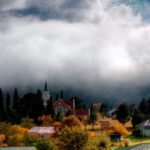BY Aurelia Mbokazi-Kashe
Tourism is one of South Africa’s largest and fastest-growing industries, and there is loads of potential for heritage and cultural tourism to be explored. Fortunately discerning consumers are looking beyond the sleek brochures and seek unique experiences where they can discover different cultures and unique heritage as part of experiential tourism.
As we wrap up Heritage Month, we’ve compiled some of our greatest heritage sites that are worth visiting all year round.
Cradle of Humankind, Gauteng
The Cradle of Humankind is where it all began and traces the origins of the human race. This site is of critical importance to scientists and was declared a World Heritage Site by UNESCO in 1999, also pushing it up the bucket list of must-visit sites in one’s life. If you live in Gauteng, you just have to block off a day and check this site out.
The world-renowned Sterkfontein Caves, the site of discovery of the famous pre-human skull affectionately known as “Mrs Ples” is a great starting point. This is a home to the oldest and most continuous paleontological dig in the world. Other places of interest within a short distance and there is so much information to consume and ponder on. There are just as many great restaurants to quench your thirst after a long day of discovery.
The Maropeng Visitor Centre is open to the public from 09h00 to 17h00 every day. The last boat ride departs at 16h00. https://www.maropeng.co.za/content/page/maropeng-visitor-centre
Richtersveld National Park, Northen Cape
On the surface, the Richtersveld National Park might seem desolate and ‘lifeless’ but when you get closer you hear the most amazing sounds of nature. This is a great place of reflection, when you want to dig deeper inside of you without distractions. This is also a treasure-chest that contains the world’s richest desert flora. If you are true adventurer or curious about life, make a point to visit this national park. And you will be hooked. There is so much to learn about the origins of the Nama people, whose ancestors roamed the plains for thousands of years. This is a heaven for off-road xplorers, offering the best 4×4 driving course, hiking and camping over and above the rich cultural experiences.https://www.sanparks.org/parks/richtersveld/

Nelson Mandela Museum, Eastern Cape
If you are interested in knowing where it all began for the world’s most iconic statesman, Nelson Rolihlahla Mandela, this museum in the heart of Mthatha is a great starting point. His inspirational journey will enthrall everyone and also get to see some of the artefacts that connect him to his origins. The Museus incorporates three sites – the village of Mvezo, with the most spectacular views over the mighty Mbashe river, where Mandela was born; Qunu, his childhood village and final resting place; and the Bhunga Building in Mthatha where the story of the life and times of one of South Africa’s greatest leaders is depicted. It is even better to get in a car and physically visit the sites, and feel connected to the different stages of his life. The Museum is open Monday to Friday from 9 am to 4pm.
https://www.nelsonmandelamuseum.org.za/

Isimangaliso Wetland, KwaZulu Natal
This is another UNESCO world heritage site located right in our backyard. There is so much to see here – flaura and fauna in abundance. After a trip to this wetland, you look at life differently. There is a variety of landforms in one vast area. These include spectacular coral reefs, long sandy beaches, coastal dunes, lake systems, swamps, and extensive reed, wetlands – and overall breathtaking scenic vistas. It is a natural wonder. As the world grapples with climate change, scientists are looking at Isimangaliso closely for some pertinent answers. The activities you can enjoy here include game drives, snorkelling, diving, bird-watching and hiking.
Mapungubwe Cultural Landscape, Limpopo
Yet another important World Heritage Site and must visit in one’s lifetime. People from all over the world flock to Mapungubwe Cultural Landscape for important historic lessons about the lives of the people who lived and thrived here between 900 and 1,300 AD.
Mapungubwe is set against the northern border of South Africa, joining Zimbabwe and Botswana. Mapungubwe developed into the largest kingdom in the sub-continent before it was abandoned in the 14th century. What survived are untouched remains of the palace sites and the entire settlement area around them. This landscape presents an amazing picture of the development of social and political structures over some 400 years. If you are keen on the blueprint to live life successfully for the original inhabitants, book your visit and bring along your open mind. It is also a great sight for bird-watching and viewing wildlife.
https://www.sanparks.org/parks/mapungubwe/




